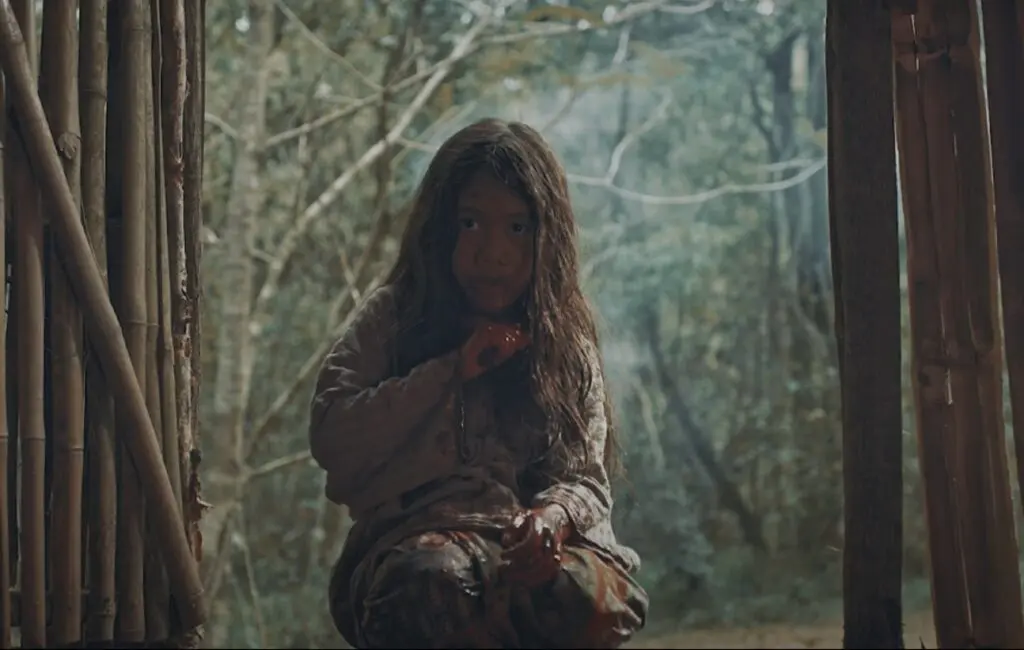Summary
A slow-burn chiller full of symbolism and ambiguity, Roh is arty folk horror but without the smugness of other films like it. An impressive debut.
As a father of two girls, I can see why they’re such a staple in the horror genre. Every culture in the world recognizes they’re as likely to give you a warm little hug as they are to kill and eat you if the mood strikes them.
Whether they’re clambering out of wells or television sets, looming out of doorways and forests, or just sitting in the back of the car, a little girl whose face is partially obscured by long tresses is bad news, wherever you are in the world. That includes Malaysia.
Roh, streaming on Netflix after being submitted for the 93rd Academy Awards in the Best International Feature Film category, knows all this. The little girl in its story, played by a mud-caked Putri Syahadah Nurqaseh, is the harbinger of all its doom and gloom, which the taut 83-minute runtime manages to include a lot of.
That she slits her own throat after prophesizing the death of an entire family seems like the kind of petty overreaction I see out of my kids when we don’t have any Weetabix in.
Roh, which means “soul” in Malay, is the second effort from Kuman Pictures, an interesting micro-budget production house that seemingly has the mandate to deliver a moodier, more thoughtful strain of Southeast Asian horror.
There aren’t any jump-scares in this, really, and that little girl’s grim prognostications are the closest it comes to cliché. Its tale of folk horror in the Dengkil forest of Selangor, where it was filmed across a couple of weeks on a shoestring budget, is drenched in atmosphere and symbolism.
For long stretches, nothing happens. When things do happen, it’s sometimes difficult to tell if they were real or imagined, if they’re intended to be literal or a metaphor. This style of ambiguous high-minded horror tends to grate on me when it’s coming from Robert Eggers or Ari Aster, but films like The Witch and Hereditary have a veneer of arty artifice that Roh trades for a lived-in authenticity.
The family cursed by the film’s evil aren’t movie stars. They’re a single mother (Farah Ahmad) and two children, son Angah (Harith Haziq) and daughter Along (Mhia Farhana), living in a remote hut in the middle of nowhere.
First-time director Emir Ezwan puts these folks through the wringer. He covers them in mud and blood and visits various supernatural misfortunes upon them, for almost no reason at all.
The cruelty is more impactful for how confused they seem by it. Others, including shaman healer Tok (June Lojong) and enigmatic tracker Pemburu (Namrom), arrive on their doorstep often with even worse news. The symbolic ambiguity treats everyone as specters who’ve ambled out of the woods.
Like little girls, there’s something inherently creepy about dense woodland too. The naturalistic setting and visuals of Roh make the otherworldly stuff stand out in starker contrast. It works in the same manner as an old fable, preying on that intuitive fear of the unknown, the sense that in every dark corner, beneath every clod of damp ground, and behind every frond of foliage there’s something sinister in waiting.
The earthy motifs are everywhere and give Ezwan’s film its contorted dark fable quality. You could imagine Hansel and Gretel leaving trails of breadcrumbs through the same thickets of trees.
Hopefully, the universality of Roh’s scares, their essential, primitive nature, will make its absence of shocks and jumps more palatable to casual audiences. Undoubtedly, thanks in large part to Netflix’s global market and bottomless pockets, a casual audience will find Roh.
It’s a subtle slow-burn like many of the contemporary Western horror films I greatly dislike, but unlike those, it isn’t so pretentious that it disappears up the dense forestry of its own backside. That, alone, should be worth some credit.
Read More: Roh Ending Explained




